Paleobiota of the Hell Creek Formation
This is an overview of the fossil flora and fauna of the Maastrichtian-Danian Hell Creek Formation.
Invertebrates
| Invertebrates | ||||||
|---|---|---|---|---|---|---|
| Genus | Species | Location | Stratigraphic position | Material | Notes | Images |
| Plesielliptio | P. postbiplicatus | Fresh water Pelecypod | ||||
| P. gibbosoides | ||||||
| P. whitfieldi | ||||||
| Rhabdotophorus | R. aldrichi | |||||
| Pleurobema | P. cryptorhynchus | |||||
| Plethobasus | P. aesopiformis | |||||
| P. biesopoides | ||||||
| Quadrula | Q. cylindricoides | |||||
| Proparreysia | P. verrucosiformis | |||||
| P. holmesiana | ||||||
| P. barnumi | ||||||
| P. percorrugata | ||||||
| P. pyramidatoides | ||||||
| P. letsoni | ||||||
| P. retusoides | ||||||
| P. corbiculoides | ||||||
| P. paucinodosa | ||||||
| ?Obovaria | ?O. pyramidella | |||||
| Corbicula | C. cf. subelliptica | |||||
| C. sp | From a marine facies ("tongue") in South Dakota. Modern members of this genus live in fresh water | |||||
| Sphaerium | S. beckmani | "Pill clam". "Nut clam". "Fingernail clam". "Pea clam". Family Sphaeriidae. | 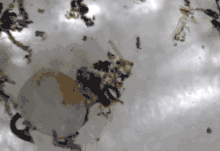 | |||
| Pleiodon | Indeterminate | |||||
| Campeloma | C. sp | Freshwater snail | ||||
| Anomia | A. gryphorhyncha | Bivalve. Family Anomiidae. From a marine facies ("tongue") in South Dakota. | ||||
| Crassostrea | C. subtrigonalis | Oyster. Family Ostreidae. Collected from a marine facies ("tongue") in South Dakota. | ||||
| Granocardium | G. sp | Bivalve. Family Cardiidae (cockle). Collected from a marine facies ("tongue") in South Dakota. | ||||
| ?Hiatella | ?H. sp | Bivalve. Present members of this genus are rock borers. Collected from a marine facies ("tongue") in South Dakota. | ||||
| Leptosolen | indeterminate | Bivalve. Family Cultellidae. Collected from a marine facies ("tongue") in South Dakota. | ||||
| Sphenodiscus | S. lenticularis | Ammonite. From a marine facies ("tongue") in South Dakota. | ||||
| Discoscaphites | D. rossi | Microconch of an ammonite. From a marine facies ("tongue") in South Dakota. | ||||
| Scaphitidae | indeterminate | Ammonite. From a marine facies ("tongue") in South Dakota. Other attributes: specimen has hooks on its shell. | ||||
| Cephaloleichnites | C. strongi | hispine beetle. ("leaf beetle") | ||||
Amphibians
Color key
|
Notes Uncertain or tentative taxa are in small text; |
| Amphibians reported from the Hell Creek Formation | |||||||
|---|---|---|---|---|---|---|---|
| Genus | Species | State | Stratigraphic position | Material | Notes | Images | |
|
indeterminate[1] |
Middle to upper Hell Creek Formation[3] |
3 unassigned specimens[4] |
Anura indet. consists of material not currently assigned to any genus of frog.[1] |
||||
|
Indeterminate[6] |
|
||||||
|
Caudata (salamander)[1] |
indeterminate[1] |
Lower to uppermost Hell Creek Formation[3] |
149 unassigned specimens[4] |
Material of Caudata indet. is not currently assigned to any genus.[1] |
|||
|
Indeterminate[6] |
|
||||||
|
Middle to upper Hell Creek Formation[3] |
6 specimens[4] |
||||||
|
L. bairdi[6] |
|
||||||
|
Lower to upper Hell Creek Formation[3] |
22 specimens[4] |
Opisthotriton is classified as a Batrachosauroididae.[1] |
|||||
|
P. garbanii[9] |
|
||||||
|
P. cretacica[6] |
|
||||||
|
P. copei[6] |
|
||||||
|
Lower to upper Hell Creek Formation[3] |
144 specimens[4] |
Scapherpeton is a scapherpetonid that is very common in the Hell Creek Formation.[1] |
|||||
|
S. pustulosa[6] |
|
A small frog |
|||||
Fish
Bony fish
| Bony fishes | ||||||
|---|---|---|---|---|---|---|
| Genus | Species | Location | Stratigraphic position | Material | Notes | Images |
| Acipenser[1][10] | A. eruciferus[10] |
|
A sturgeon | |||
|
cf. A. sp.[1] |
Lower to upper Hell Creek Formation[3] |
18 specimens are tentatively assigned to Acipenser sp.[4] |
Acipenser sp. is tentatively referred to the genus.[1] |
|||
|
A. fragosa[10] |
|
small amiid fish (ubiquitous). Closely related to the modern Bowfin |
| |||
| Belonostomus[1][10] | B. longirostris[1][10] | Lower to upper Hell Creek Formation[3] | 28 specimens[4] | A long-snouted slender fish classified as an aspidorhynchid.[1] | ||
| Coriops[12] | C. amnicolus[12] |
|
||||
| Kindleia[1] | K. fragosa[1] | Lower to uppermost Hell Creek Formation[3] | 2610 specimens have been assigned to Kindleia, making it an extremely common genus.[4] | Kindleia is a genus assigned to Amiidae, along with Melvius and Amia.[1] | ||
| Lepisosteus[1][10] | L. occidentalis[1][10] | Lower to uppermost Hell Creek Formation[3] | 938 specimens are assigned to Lepidosteus[4] | A lepidosteid that is very common in the Hell Creek Formation.[1] |  | |
| Melvius[1] | M. thomasi[1] | Lower to upper Hell Creek Formation[3] | 6 specimens are assigned to Melvius[4] | A large amiid fish.[1] | ||
| Phyllodus | P. paulkatoi | Fish with columnar teeth | ||||
| Palaeolabrus[10] | P. montanensis[10] |
|
||||
| Paleopsephurus[10] | P. wilsoni[10] |
|
A paddlefish | |||
| Palaeolabrus | P. montanensis | Fish (incertae sedis) | ||||
| Paralbula[14] | P. casei[14] |
|
||||
| Platacodon[12] | P. nanus[12] |
|
Small teleost fish | |||
| Protamia[10] | Indeterminate[10] |
|
||||
| Pachyrhizodontoidei | Indeterminate | Fish | ||||
| Protoscaphirhynchus[10] | P. squamosus[10] |
|
A sturgeon | |||
Cartilaginous fish
| Chondrichthyes reported from the Hell Creek Formation | ||||||
|---|---|---|---|---|---|---|
| Genus | Species | Location | Stratigraphic position | Material | Notes | Images |
|
C. sp.[15] |
A member of Hemiscylliidae.[15] |
| ||||
|
G. nordquistae |
|
Isolated teeth |
||||
|
L. selachos[17] |
Lower to upper Hell Creek Formation[3] |
40 specimens[4] |
A genus of prehistoric sharks in the family Hybodontidae. It makes up 0.4% of the remains of the vertebrates of the Hell Creek Formation.[1] |
|||
|
M. pustulosus[15] |
Lower to upper Hell Creek Formation.[3] |
Is an anacoracid batoid[1] rajiform related to guitarfishes.[15] Described on the basis of teeth formerly assigned to the species M. bipartitus.[15] The material assigned to Myledaphus bipartitus and makes up 16.5% of the vertebrate remains.[1] |
||||
|
Protoginglymostoma[15] |
P. estesi[15] |
A member of Ginglymostomatidae.[15] Formerly assigned to the genus Brachaelurus. |
||||
|
Restesia[15] |
R. americana[15] |
Middle Hell Creek Formation[3] |
5 specimens previously assigned to Squatirhina[4] |
A wobbegong-like shark.[15] Formerly assigned to Squatirhina. The remains consist of 0.05% of the vertebrates.[4] Also known from the Lance Formation.[15] |
||
|
Carcharhinidae indet.[16] |
Indeterminate |
|
An isolated tooth. |
|||
Dinosaurs
A paleo-population study is one of the most difficult of analyses to conduct in field paleontology. Here is the most recent estimate of the proportions of the eight most common dinosaurian families in the Hell Creek Formation, based on detailed field studies by White, Fastovsky and Sheehan (1998).
- Ceratopsidae 61%
- Hadrosauridae 23%
- Ornithomimidae 5%
- Tyrannosauridae 4%
- Hypsilophodontidae 3%
- Dromaeosauridae 2%
- Pachycephalosauridae 1%
- Troodontidae 1% (represented only by teeth)

Outcrops sampled by the Hell Creek Project were divided into three sections: lower, middle and upper slices. The top and bottom sections were the focus of the PLoS One report, and within each portion many remains of Triceratops, Edmontosaurus, and Tyrannosaurus were found. Triceratops was the most common in each section, but, surprisingly, Tyrannosaurus was just as common, if not slightly more common, than the hadrosaur Edmontosaurus. In the upper Hell Creek section, for example, the census included twenty two Triceratops, five Tyrannosaurus, and five Edmontosaurus.
The dinosaurs Thescelosaurus, Ornithomimus, Pachycephalosaurus and Ankylosaurus were also included in the breakdown, but were relatively rare. Other dinosaurs, such as Sphaerotholus, Denversaurus, Torosaurus, Struthiomimus, Acheroraptor, Dakotaraptor, Pectinodon, Richardoestesia, Paronychodon, Anzu, Leptorhynchos and Troodon (more likely Pectinodon), were reported as being rare and are not included in the breakdown.
The dinosaur collections made over the past decade during the Hell Creek Project yielded new information from an improved genus-level collecting schema and robust data set that revealed relative dinosaur abundances that were unexpected, and ontogenetic age classes previously considered rare. We recognize a much higher percentage of Tyrannosaurus than previous surveys. Tyrannosaurus equals Edmontosaurus in U3 and in L3 comprises a greater percentage of the large dinosaur fauna as the second-most abundant taxon after Triceratops, followed by Edmontosaurus. This is surprisingly consistent in (1) the two major lag deposits (MOR loc. HC-530 and HC-312) in the Apex sandstone and Jen-rex sand where individual bones were counted and (2) in two thirds of the formation reflected in L3 and U3 records of dinosaur skeletons only.
Triceratops is by far the most common dinosaur at 40% (n = 72), Tyrannosaurus is second at 24% (n = 44), Edmontosaurus is third at 20% (n = 36), followed by Thescelosaurus at 8% (n = 15), Ornithomimus at 5% (n = 9), and Pachycephalosaurus and Ankylosaurus both at 1% (n = 2) are relatively rare.
Fossil footprints of dinosaurs from the Hell Creek Formation are very rare. As of 2017, there is only one find of a possible Tyrannosaurus rex footprint, dating from 2007 and described a year later.[19]
Ornithischians
Ankylosaurs
| Ankylosauria reported from the Hell Creek Formation | ||||||
|---|---|---|---|---|---|---|
| Genus | Species | State | Stratigraphic position | Material | Notes | Images |
|
A. magniventris[20] |
|
An ankylosaur. Also found in the Lance and Scollard Formations. |
| |||
|
D. schlessmani[20] |
A nodosaurid ankylosaur. |
| ||||
|
E. sp.[22] |
|
isolated teeth |
A nodosaurid ankylosaur |
 | ||
Pachycephalosaurs
An undescribed Pachycephalosaur is present in North Dakota.[23]
| Pachycephalosaurs reported from the Hell Creek Formation | ||||||
|---|---|---|---|---|---|---|
| Genus | Species | State | Stratigraphic position | Material | Notes | Images |
|
D. hogwartsia[24] |
|
|
A pachycephalosaur, possibly synonymous with Pachycephalosaurus. |
| ||
|
P. wyomingensis[20] |
A pachycephalosaur. Also found in the Lance Formation. |
| ||||
|
S. buchholtzae[20] |
|
"Skull material."[25] |
| |||
|
S. spinifer[20] |
|
A pachycephalosaur, possibly synonymous with Pachycephalosaurus. Also found in the Ferris Formation and the Lance Formation. |
| |||
Ceratopsians
Indeterminate ceratopsid teeth and some identifiable bones from Triceratops can be extremely common. 8.31% of all vertebrate remains from the Hell Creek Formation are unassigned ceratopsids.[4] In 2012, a new unidentified species of chasmosaur ceratopsian with noticeable differences from Triceratops was unearthed in South Dakota by a fossil hunter named John Carter.[26][27][28]
Color key
|
Notes Uncertain or tentative taxa are in small text; |
| Ceratopsians reported from the Hell Creek Formation | |||||||
|---|---|---|---|---|---|---|---|
| Genus | Species | Synonyms | State | Stratigraphic position | Material | Notes | Images |
|
Leptoceratops c.f. gracilis[20] |
|
A small primitive-looking ceratopsian. |
| ||||
|
T. sacrisonorum |
|
A ceratopsian possibly synonymous with Triceratops[29] |
| ||||
|
Upper Hell Creek Formation[3] |
A ceratopsian possibly synonymous with Triceratops.[30] A rare ceratopsid.[3] |
| |||||
|
Lowermost to the middle Hell Creek Formation[32] |
4 specimens are assigned to Triceratops horridus from the Hell Creek Formation.[4] Isolated, shed ceratopsid teeth are incredibly common in the Hell Creek and Lance Formations, being by most collectors, with some being nothing more than worn down fragments up superb teeth containing complete, preserved roots. Because the teeth of different ceratopsians are so similar to one another, its hard to differentiate between genera/species, but based on the abundance of indentifiable bones belonging Triceratops in Lancian-aged North American formations, esspecially the Hell Creek, isolated ceratopsid teeth from the lower and middle Hell Creek Formation have a high likelihood of originating from T. horridus. |
A ceratopsian.[1] Also found in the Evanston, Frenchman, Lance, Laramie, and Scollard Formations. |
| ||||
|
T. prorsus[20] |
|
Upper 1/3 of the Hell Creek Formation[32] |
Very common. Because the teeth of different ceratopsians are so similar to one another, its hard to differentiate between genera/species, but based on the abundance of indentifiable bones belonging Triceratops in Lancian-aged North American formations, esspecially the Hell Creek, isolated ceratopsid teeth from the upper 1/3 of the Hell Creek Formation have a high likley hood of originating from T. prorsus. |
Also found in the Frenchman and Lance Formations. |
| ||
Ornithopods and Parksosaurs
Indeterminate hadrosaurid remains are very common in the Hell Creek Formation.[1]
| Ornithopods and Thescelosaurs reported from the Hell Creek Formation | |||||||
|---|---|---|---|---|---|---|---|
| Genus | Species | Synonyms | State | Stratigraphic position | Material | Notes | Images |
|
E. annectens |
Very common. |
A hadrosaur. Also found in the Denver, Frenchman, Lance, Laramie, and Scollard Formations. |
| ||||
|
T. garbanii[34] |
|
||||||
|
Lower to upper Hell Creek Formation[3] |
50 specimens[4] |
A small thescelosaurine. Also found in the Frenchman, Lance, Laramie, and Scollard Formations.[36] |
| ||||
Theropods
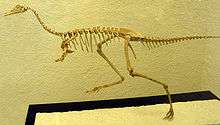
Theropod tracks have been found in South Dakota.[21] An unnamed alvarezsaurid, closely related to the Asian genus Mononykus, is known from Montana.[37] A second footprint that may have been made by a specimen of Tyrannosaurus was first reported in 2007 by British paleontologist Phil Manning, from the Hell Creek Formation of Montana. This second track measures 72 centimeters (28 in) long, shorter than the track described by Lockley and Hunt. Whether or not the track was made by Tyrannosaurus is unclear, though Tyrannosaurus is the only large theropod known to have existed in the Hell Creek Formation.[38][39]
Tyrannosaurids
| Tyrannosaurids reported from the Hell Creek Formation | |||||||
|---|---|---|---|---|---|---|---|
| Genus | Species | Synonyms | State | Stratigraphic position | Material | Notes | Images |
|
Lower to upper Hell Creek Formation. |
A tyrannosaur, known from several specimens including a juvenile nicknamed "Jane". Also found in the Denver, Frenchman, Hill Creek South, Javelina, Lance, Ferris, Livingston, McRae, North Horn, Scollard, Willow Creek Formation, and also found in Lomas Coloradas Formations. Isolated teeth in the Hell Creek are common enough to be dug commercially be collectors, but rare enough that they are often sold for very high prices with fragmentary teeth ussually beginning at least in the hundreds of USD, and complete teeth in the thousands of USD |
| ||||
|
|
Lower to upper Hell Creek Formation. |
A few specimens are known |
Invalid genus, now recognised a juvenile T. rex. |
| ||
Ornithomimosaurs
Ornithomimid remains are not uncommon in the Hell Creek Formation.[1] Fifteen specimens from the Hell Creek Formation are undetermined ornithomimids[4]
Color key
|
Notes Uncertain or tentative taxa are in small text; |
| Ornithomimids reported from the Hell Creek Formation | |||||||
|---|---|---|---|---|---|---|---|
| Genus | Species | State | Stratigraphic position | Material | Notes | Images | |
|
"Orcomimus" |
unnamed |
|
One partial skeleton. |
An ornithomimid. Numem nudum |
|||
|
S. sedens[41] |
|
|
A large ornithomimid similar to Gallimimus in size. Also found in the Lance Formation.[41] |
| |||
|
O. velox[41] |
|
Fragmentary specimens |
A ornithomimid which was also found in the Denver Formation. |
| |||
Oviraptorosaurs
Oviraptorosaur fossils have been found at the Hell Creek Formation for many years, most notably from isolated elements until the discovery of Anzu. In 1997, paleontologists discovered a fossil trackway of gigantic oviraptorid belonging to a creature dubbed Wakinyatanka styxi.[42]
Color key
|
Notes Uncertain or tentative taxa are in small text; |
| Oviraptorosaurs reported from the Hell Creek Formation | |||||||
|---|---|---|---|---|---|---|---|
| Genus | Species | State | Stratigraphic position | Material | Notes | Images | |
|
A. wyliei[43] |
Lower to upper Hell Creek Formation[4] |
12 well-preserved specimens[3] |
One of the largest known oviraptorosaurs, and the largest known from North America. Material previously assigned to Caenagnathidae indet. is now placed in the genus Anzu.[43] |
| |||
|
L. elegans |
|
An extinct genus of caenagnathid. |
| ||||
Eumaniraptorans
Historically, numerous teeth have been attributed to various dromaeosaurid and troodontid taxa with known body fossils from only older formations, including Dromaeosaurus, Saurornitholestes, and Troodon. However, in a 2013 study, Evans et al. concluded that there is little evidence for more than a single dromaeosaurid taxon, Acheroraptor, in the Hell Creek-Lance assemblages, which would render these taxa invalid for this formation. This was disproved in a 2015 study, DePalma et al., when they described the new genus Dakotaraptor, a large species of dromaeosaur.[44] Fossilized teeth of various troodontids and coelurosaurs are common throughout the Hell Creek Formation; the best known examples include Paronychodon, Pectinodon and Richardoestesia, respectively.
| Eumaniraptorans reported from the Hell Creek Formation | |||||||
|---|---|---|---|---|---|---|---|
| Genus | Species | State | Stratigraphic position | Material | Notes | Images | |
|
A. temertyorum [44] |
Lower? to upper Hell Creek Formation[1] |
A velociraptorine dromaeosaurid. Teeth previously referred to various Campanian dromaeosaurids Saurornitholestes and Dromaeosaurus, frequently found throughout the formation, probably belong to this one species. Evans et al. conclude that there is little evidence for the former two taxa being present in the Hell Creek-Lance assemblages.[44] |
| ||||
|
Middle Hell Creek Formation[3] |
|
| ||||
|
cf. A. archibaldi[45] |
|
Uppermost Hell Creek Formation[45] |
|
An avisaurid tentatively referred to A. archibaldi based on its size.[45] |
|||
|
A. sp.[46] |
|
|
|||||
|
B. baileyi[47] |
|
|
A primitive hesperornithiform.[47] |
||||
|
D. steini [48] |
|
Upper Hell Creek Formation[48] |
A dromaeosaurid. Second-largest dromaeosaurid known.[44] |
| |||
|
P. skutchi [49] |
|
|
A hesperornithiform also found in the Lance Formation.[49] |
||||
|
"Unnamed enantiornithine B"[45] |
Unnamed |
|
|
An unnamed enantiornithean.[45] |
|||
|
"Unnamed hesperornithiform A"[45] |
Unnamed |
|
|
A primitive hesperornithiform.[47] The Hell Creek specimen was referred to the same unnamed taxon as RSM P 2315.1 from the Canadian Frenchman Formation.[45] RSM P 2315.1 was later made the holotype of Brodavis americanus.[47] May be a synonym of Potamornis.[45] |
|||
|
"Unnamed ornithurine B"[45] |
Unnamed[50] |
|
|
An ornithurine possibly similar to Cimolopteryx[45][50] |
|||
|
"Unnamed ornithurine C"[45] |
Unnamed |
An ornithurine, also present in the Lance Formation and Fort Union Formation, one of the few individual bird species known to have survived the Cretaceous–Paleogene extinction[45] |
|||||
|
"Unnamed ornithurine D"[45] |
Unnamed |
|
|
An ichthyornithean also present in the Frenchman Formation[45] |
|||
Pterosaurs
| Pterosaurs of the Hell Creek Formation | |||||||
|---|---|---|---|---|---|---|---|
| Taxa | Species | State | Stratigraphic location | Material | Notes | Images | |
|
Azhdarchidae spp. |
Indeterminate |
|
Records of pterosaur remains from the Hell Creek Formation are two indeterminate specimens, which have been recorded from North Dakota but not described (Johnson et al., 2000; Pearson et al., 2002). A single azhdarchid neck bone may belong to the genus Quetzalcoatlus, though they are not diagnostic to the generic level.[52] |
 |
|||
|
Indeterminate |
|
||||||
Crocodylomorphs
Color key
|
Notes Uncertain or tentative taxa are in small text; |
| Crocodylomorphs reported from the Hell Creek Formation | |||||||
|---|---|---|---|---|---|---|---|
| Genus | Species | State | Stratigraphic position | Material | Notes | Images | |
|
|
Extinct genus of crocodylians that lived from the Late Cretaceous to the Eocene in North America. |
| ||||
|
|
Extinct genus of alligatoroid. |
| ||||
|
|
Extinct genus of gavialoid crocodilian which existed during the Late Cretaceous and early Paleocene. |
| ||||
Turtles
Color key
|
Notes Uncertain or tentative taxa are in small text; |
| Turtles reported from the Hell Creek Formation | |||||||
|---|---|---|---|---|---|---|---|
| Genus | Species | State | Stratigraphic position | Material | Notes | Images | |
|
Indeterminate[55] |
|
Extinct genus of aquatic turtles belonging to the family Adocidae. |
| ||||
|
A. infernalis[57] |
|
A turtle belonging to the family Trionychidae. Its fossils from the Hell Creek Formation were formerly assigned to the late Campanian species Axestemys splendidus.[58][57] |
|||||
|
C. victa[55] |
|
A relative of Dermatemydidae. |
|||||
|
P. brinkman |
|
A relative of Baenidae. |
|||||
|
E. cretacea |
|
A relative of chelydrids.[59] |
|||||
|
Eubaena[55] |
E. cephalica[55] |
|
|||||
|
G. sonsalla |
|
||||||
|
P. cohen |
|
A relative of extinct family of cryptodiran turtles. |
|||||
|
C. putorius |
|
A relative of Baenidae. |
|||||
|
G. lancensis |
|
Trionychidae related to the softshell turtle. |
|||||
|
H. clark[59] |
|
A kinosternoid related to the Central American river turtle.[59] |
|||||
|
Plastomenus |
P. sp |
||||||
|
B. sinuosa |
Largest dermatemydid land tortoise. |
||||||
|
Indeterminate[55] |
|
A genus of softshell turtles belonging to the family Trionychidae. |
| ||||
|
Aspideretoides |
A. foveatus |
||||||
|
Helopanoplia |
H. distincta |
||||||
|
Judithemys |
J. backmani |
Thin-shelled macrobaenid turtle. |
|||||
|
P. antiqua |
|||||||
|
Stygiochelys |
S. estesi |
||||||
|
N. eximius |
| ||||||
|
Saxochelys[60] |
S. gilberti |
|
|
A member of the family Baenidae. |
|||
|
Thescelus |
T. insiliens |
||||||
|
Indeterminate |
Chelydrids-like turtle. |
||||||
Squamata
Color key
|
Notes Uncertain or tentative taxa are in small text; |
| Squamates reported from the Hell Creek Formation | |||||||
|---|---|---|---|---|---|---|---|
| Genus | Species | State | Stratigraphic position | Material | Notes | Images | |
|
A platynotan lizard of uncertain phylogenetic placement, also known from the Lance Formation.[61] |
||||||
|
An alethinophidian snake of uncertain phylogenetic placement.[61] |
||||||
|
A polyglyphanodontian lizard of uncertain phylogenetic placement. Also known from the Lance Formation.[61] |
||||||
|
Peneteius[61] |
P. aquilonius[61] |
|
A chamopsiid polyglyphanodontian lizard.[61] |
||||
|
Haptosphenus |
H. placodon |
| |||||
|
Leptochamops |
L. denticulatus |
||||||
|
C. segnis |
|||||||
|
Contogenys |
C. sloani |
||||||
|
Exostinus |
E. lancensis |
| |||||
|
Proxestops |
P. jepseni |
||||||
|
Parasaniwa |
P. wyomingensis |
Necrosaurid lizard. |
|||||
|
Paraderma |
P. bogerti |
||||||
|
P. canadensis |
A large Monstersauria lizard, closely related to today's varanid lizards. It was the largest lizard in the Hell Creek formation. |
||||||
|
Indeterminate |
|
||||||
Choristoderans
Color key
|
Notes Uncertain or tentative taxa are in small text; |
| Choristoderans reported from the Hell Creek Formation | |||||||
|---|---|---|---|---|---|---|---|
| Genus | Species | State | Stratigraphic position | Material | Notes | Images | |
|
C. sp.[54] |
|
A champsosaur. |
| ||||
Mammals
Multituberculates
Color key
|
Notes Uncertain or tentative taxa are in small text; |
| Multituberculates reported from the Hell Creek Formation | ||||||
|---|---|---|---|---|---|---|
| Genus | Species | State | Stratigraphic position | Material | Notes | Images |
|
C. minor[63] |
|
A multituberculate of uncertain phylogenetic placement. |
| |||
|
C. nitidus |
|
A cimolodontid multituberculate. |
||||
|
C. cf. nitidus[63] |
|
A cimolodontid multituberculate. |
||||
|
C. sp.[63] |
|
A cimolodontid multituberculate. |
||||
|
C. gracilis |
|
A cimolodontid multituberculate. |
| |||
|
|
A cimolomyid multituberculate. |
||||
|
E. browni[63] |
|
A cimolomyid multituberculate. |
||||
|
M. conquistus |
|
A cimolomyid multituberculate. |
| |||
|
M. robustus |
|
A cimolomyid multituberculate. |
| |||
|
M. cf. robustus |
|
A cimolomyid multituberculate. |
||||
|
M. sp. |
|
A cimolomyid multituberculate. |
||||
|
?M. sp.[63] |
|
A cimolomyid multituberculate. |
||||
|
M. formosa |
|
A neoplagiaulacid multituberculate. |
||||
|
M. cf. formosa |
|
A neoplagiaulacid multituberculate. |
||||
|
M. hensleighi |
|
A neoplagiaulacid multituberculate. |
||||
|
M. cf. hensleighi |
|
A neoplagiaulacid multituberculate. |
||||
|
M. thompsoni |
|
A neoplagiaulacid multituberculate. |
||||
|
M. cf. thompsoni |
|
A neoplagiaulacid multituberculate. |
||||
|
M sp.[63] |
|
A neoplagiaulacid multituberculate. |
||||
|
?M sp.[63] |
|
A neoplagiaulacid multituberculate. |
||||
|
?N. burgessi[63] |
|
A neoplagiaulacid multituberculate. |
||||
|
P. priscus[63] |
|
A multituberculate of uncertain phylogenetic placement. |
||||
|
P. nelsoni[64] |
A cimolomyid multituberculate. |
|||||
|
S. kuszmauli |
|
It was a member of the extinct order Multituberculata. |
||||
Metatherians
Color key
|
Notes Uncertain or tentative taxa are in small text; |
| Metatherians reported from the Hell Creek Formation | ||||||
|---|---|---|---|---|---|---|
| Genus | Species | State | Stratigraphic position | Material | Notes | Images |
|
A. florencae |
|
A pediomyid. |
||||
|
A. hatcheri[65] |
|
A pediomyid. |
||||
|
A. marshi |
|
An alphadontid. genus of small, primitive mammal that was a member of the Metatheria, a group of mammals that includes modern-day marsupials. |
||||
|
A. cf. marshi |
|
An alphadontid. |
||||
|
A. wilsoni |
|
An alphadontid. |
||||
|
A. cf. wilsoni |
|
An alphadontid. |
||||
|
A. sp.[63] |
|
An alphadontid. |
| |||
|
D. padanicus |
|
A stagodontid. |
||||
|
D. vorax |
|
A stagodontid. genus of Stagodontidae marsupials from the Late Cretaceous of North America. |
| |||
|
D. cf. vorax |
|
A stagodontid. |
| |||
|
D. sp. |
|
A stagodontid. |
||||
|
cf. D. sp.[63] |
|
A stagodontid. |
||||
|
Glasbius[63] |
G. twitchelli |
|
A glasbiid. |
|||
|
G. cf. twitchelli[63] |
|
A glasbiid. |
||||
|
L. cooki |
|
A pediomyid. |
||||
|
L. krejcii[65] |
|
A pediomyid. |
||||
|
N. improvida[64] |
||||||
|
Nortedelphys |
|
|||||
|
Pediomys[63] |
P. elegans[63] |
|
A pediomyid. |
|||
|
P. foxi |
|
An alphadontid. |
||||
|
P. lulli[63] |
|
An alphadontid. | ||||
|
Turgidodon[63] |
T. rhaister[63] |
|
An alphadontid. |
|||
Eutherians
Color key
|
Notes Uncertain or tentative taxa are in small text; |
| Eutherians reported from the Hell Creek Formation | ||||||
|---|---|---|---|---|---|---|
| Genus | Species | State | Stratigraphic position | Material | Notes | Images |
|
A. magnus |
|
a possibe creodont, formerly a species of Cimolestes[68] |
||||
|
Alostera[63] |
A. saskatchewanensis[63] |
|
A eutherian of uncertain phylogenetic placement. |
|||
|
Ambilestes |
A. cerberoides |
|
A eutherian of uncertain classification, formally a species of Cimolestes |
|||
|
Batodon[63] |
B. tenuis[63] |
|
A cimolestid eutherian. |
|||
|
C. incisus |
|
A cimolestid eutherian. | ||||
|
C. stirtoni[63] |
|
A cimolestid eutherian. |
||||
|
Gypsonictops[63] |
G. hypoconus |
|
A gypsonictopsid eutherian. |
|||
|
G. illuminatus |
|
A gypsonictopsid eutherian. |
||||
|
G. cf. illuminatus |
|
A gypsonictopsid eutherian. |
||||
|
G. sp.[63] |
|
A gypsonictopsid eutherian. |
||||
|
cf. Paranyctoides[63] |
cf. Paranyctoides sp.[63] |
|
A nyctitheriid eutherian. |
|||
|
P. coombsi[65] |
|
A stem-placental. |
| |||
|
P. ceratops |
|
A genus with four species believed to be either stem-placentals or stem-primates. |
| |||
|
Scollardius |
S. propalaeoryctes |
|
A eutherian of uncertain classification, formally a species of Cimolestes |
|||
Flora
The Hell Creek Formation was a low floodplain at the time before the sea retreated, and in the wet ground of the dense woodland, laurels, sycamores, beech, magnolias, and palm trees grew. Ferns and moss grew in the forest understory. Plant fossils from the upper early Paleocene of the Hell Creek Formation include the ferns Botrychium, Woodwardia, Osmunda, Onoclea and Azolla; conifers Metasequoia, Glyptostrobus and cupressaceous conifers; the monocot Limnobiophyllum (a relative of duckweeds); and the dicots Cercidiphyllum and Platanus.[69][70] There are numerous types of leaves, seeds, flowers and other structures from Angiosperms, or flowering plants. The Hell Creek Formation of this layer contains 300 tablets or more of plants. Angiosperms are by far the most diverse and dominant flora of the entire population, about 90 percent. However, the evergreens included conifers, ginkgo, bald cypress, and cycads. Flowering plants included a variety of trees that no longer exist. Today Hell Creek's flora is hardwood forest mixed with deciduous and evergreen forest and apparently similar to then, but with a closer look, the current plant community is distinct. In sharp contrast to Montana today, the presence of palm trees meant the climate was warmer then.
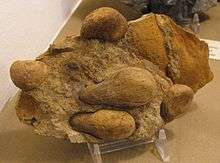
Dr. Kirk Johnson claims that there are no grasses, oaks, maples, or willows in the Hell Creek Formation. Ferns are uncommon in the majority of the formation, however there is a great increase in the abundance of fossil fern spores in the two centimeters of rock that directly overlies the impact fallout layer (the famous K-T boundary layer). This increase in fern spore abundance is commonly referred to as "the fern spike" (meaning that if the abundance of spores as a function of stratigraphic position were plotted out, the graph would show a spike just above the impact fallout layer). Johnson also found that the majority of the angiosperm genera in the Hell Creek Formation are now extinct. He also believes that, very roughly, 80% of the terrestrial plant taxa died out in what is now Montana and the Dakotas at the K/T boundary.
Many of the modern plant affinities in the Hell Creek Formation (e.g., those with the prefix "aff." or with quotes around the genus name) may not in reality belong to these genera; instead they could be entirely different plants that resemble modern genera. Therefore, there is some question regarding whether the modern Populus or Juglans, as two examples, actually lived in the late Cretaceous.
Compared to the rich Hell Creek Formation fossil plant localities of the Dakotas, relatively few plant specimens have been collected from Montana. A few taxa were collected at Brownie Butte Montana by Shoemaker, but most plants were collected from North Dakota (Slope County) and from South Dakota. "TYPE" after the binomial means that it is represented by a type specimen found in the Yale-Peabody Museum collections. "YPM" is the prefix for the Yale-Peabody Museum specimen number.
Overview (from Johnson, 1997): 190 plant morphotypes, including:
- 1 bryophyte (mosses and liverworts)
- 6 "pteridophytes" (A paraphyletic group: modern examples are horsetails, club mosses and ferns.)
- 9 conifers
- 2 ginkgo (uncommon)
- 172 angiosperms (90% of all specimens collected, as well as 90% of all taxa found)
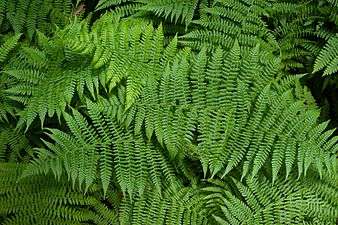 Ferns from Hell Creek
Ferns from Hell Creek- Cycads are found in Hell Creek
- Ginkgo (uncommon) are found in Hell Creek
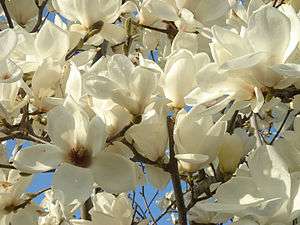 Various angiosperms from Hell Creek
Various angiosperms from Hell Creek
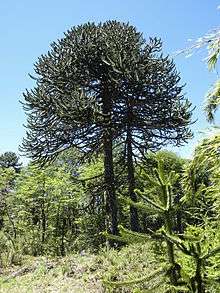 Monkey-puzzle leaves are found in Hell Creek
Monkey-puzzle leaves are found in Hell Creek Fossil palm trees indicate a hotter paleoclimate
Fossil palm trees indicate a hotter paleoclimate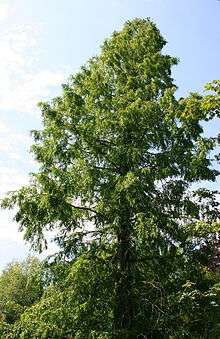 Redwood seed cones are known from Hell Creek
Redwood seed cones are known from Hell Creek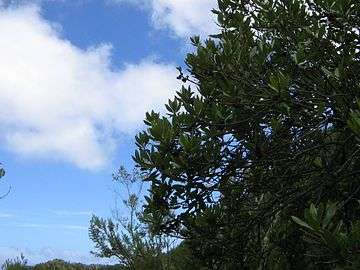 Laurus are found in Hell Creek
Laurus are found in Hell Creek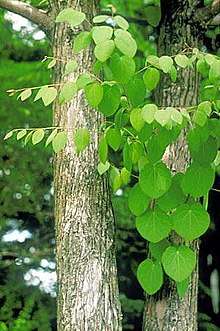 Cercidiphyllum are found in Hell Creek
Cercidiphyllum are found in Hell Creek Magnolia is commonly found in Hell Creek
Magnolia is commonly found in Hell Creek
- Plants of the Hell Creek Formation
- various ferns and cycads.
- Equisetum (Equisetaceae)
- Platyspiroxylon (Cupressaceae)
- Podocarpoxylon (Podocarpaceae)
- Elatocladus (Taxodiaceae)
- Sequoiaxylon (Taxodiaceae)
- Taxodioxylon (Taxodiaceae)
- Araucaria (Araucariaceae)
- very widespread Mesozoic conifer group. All members are extinct (Cheirolepidiaceae)
- Artocarpus (Moraceae)
- Barberry family (Berberidaceae)
- Cercidiphyllum (Cercidiphyllaceae)
- Dombeyopsis (Sterculiaceae)
- Laurel family (Lauraceae)
- Magnolia (Magnoliaceae)
- Palms (Arecaceae)
- Platanus family includes today's American sycamore or plane tree (Platanaceae)
Color key
|
Notes Uncertain or tentative taxa are in small text; |
| Flora of the Hell Creek Formation | ||||||
|---|---|---|---|---|---|---|
| Genus | Species | Location | Stratigraphic position | Abundance | Notes | Images |
|
Aquilapollenites |
"Aquilapollenites" attenuatus |
|||||
|
"Aquilapollenites" collaris |
||||||
|
"Aquilapollenites" conatus |
||||||
|
"Aquilapollenites" delicatus |
||||||
|
"Aquilapollenites" marmarthensis |
||||||
|
"Aquilapollenites" quadricretaeus |
||||||
|
"Aquilapollenites" quadrilobus |
||||||
|
"Aquilapollenites" reductus |
||||||
|
"Aquilapollenites" senonicus |
||||||
|
"Aquilapollenites" turbidus |
||||||
|
"Aquilapollenites" striatus |
| |||||
|
Alnipollenites |
||||||
|
"Ficus" |
"Ficus" planicostata |
| ||||
|
"Ficus" artocarpoides |
||||||
|
"Ficus" trinervis |
||||||
|
Ilexpollenites |
Ilexpollenites compactus |
|||||
|
Interpollis |
Interpollis cf. I. supplingensis |
|||||
|
Balmeisporites |
Balmeisporites sp. |
|||||
|
Marmarthia |
Marmarthia pearsonii |
|||||
|
"Myrica" |
"Myrica" torreyi |
| ||||
|
Platanites |
Platanites marginata |
|||||
|
Sabalites |
Sabalites sp. |
|||||
|
Tricolpites |
Tricolpites interangulus |
|||||
|
M. sp |
Casts of Dawn Redwood seed cones are known from the Hell Creek. |
| ||||
|
"Grewiopsis" |
"G" saportana |
Another generic Hamamelididae. |
||||
|
A?. robusta |
Abundant at Brownie Butte, Montana. |
| ||||
|
Cobbania |
C. corrugata |
A prehistoric species of water lettuce, previously assigned to the genus Pistia. |
| |||
|
A. araucana |
Casts of Monkey-puzzle leaves are found in Hell Creek. |
| ||||
|
A. lessigiana |
Abundant at Brownie Butte, Montana. |
| ||||
|
C. taurenensis |
Some may be Eucommiacaea. |
| ||||
|
C. lineafolia |
Included in Ficus affinis by L. Hickey. Belongs in Rhamnaceae (modern buckthorns and Ceanothus). Some other specimens referred to Cinnamomum sezanensis(?) sp.), a real cinnamon bush. |
| ||||
|
Cissu |
C. marginata |
Also spelled "marginatus". |
||||
|
J. leconteana |
| |||||
|
Liriodendrites |
L. bradacci |
Johnson, 1996. In the Magnoliidae: a common taxon. |
||||
|
L. laramiense |
May be related to today's tulip tree (yellow poplar). |
| ||||
|
Leepiesceia |
L. presrtocarpoides |
another laurel. |
||||
|
Marmarthia |
M. pearsonii |
Johnson, 1996. In the Lauraceae: a common taxon. |
| |||
|
M. trivialis |
Johnson, 1996. In the Lauraceae: a common taxon. |
|||||
|
Platanites |
P. marginata |
Johnson, 1996. In the Platanaceae: Hamamelididae. A common taxon. |
| |||
|
Q. viburnifolia |
Included within "Cissus" marginata. May be in the Platanaceae. |
|||||
|
Dombeyopsis |
D. trivialis |
Included within "Cissus" marginata. May be in the Platanaceae. |
||||
|
D. obtusa |
Included within "Cissus" marginata. May be in the Platanaceae. |
|||||
|
Rhamnus |
R. cleburnii |
A buckthorn look-alike. |
| |||
|
V. stantonii |
This could be a real Vitus (a real grape). |
| ||||
|
Z. fibrillosus |
| |||||
|
Androvettia |
A. catenulata |
|||||
|
Araliaephyllum |
A. polevoi |
|||||
|
Bisonia |
B. niemii |
Incertae sedis. Johnson, 1996. A broad leaf, probably in the Laurales. A common taxon. Type specimen was found near a Tyrannosaurus skeleton in South Dakota. |
| |||
|
indeterminate |
| |||||
|
C. insignis |
May belong in Hamemelididae. |
|||||
|
C. lobata |
||||||
|
C. puilasokensis |
||||||
|
Cupressinocladus |
C. interruptus |
|||||
|
Dombeyopsis |
D. trivialis |
|||||
|
Elatides |
E. longifolia |
In Platanales, according to Leo Hickey. |
||||
|
Erlingdorfia |
E. montana |
Johnson, 1996. In the Platanaceae: Hamamelididae (related to today's Sycamore). A common taxon. |
||||
|
G. adiantoides |
The only ginkgo in the Hell Creek Formation; uncommon |
| ||||
|
G. nordenskioldii |
| |||||
|
G. sp |
| |||||
|
Laurophyllum |
L. wardiana |
|||||
|
M. pulchra |
This species was thought to occur only in southern Wyoming flora, but Leo Hickey claims it is found further north in Montana and the Dakotas. |
| ||||
|
M. pealii |
| |||||
|
N. yukonensis |
The only Hell Creek Formation cycadeoid. Uncommon. |
|||||
|
O. hesperia |
||||||
|
Paranymphaea |
P. hastata |
|||||
|
Platanophyllum |
P. montanum |
|||||
|
P. verrucosa |
||||||
|
Rhamnus |
R. salicifolius |
Another buckthorn look-alike. Abundant at Brownie Butte, Montana |
| |||
|
Sabalites |
S. sp |
Palm tree. |
| |||
|
S. powelliana |
||||||
|
Sequoites |
S. artus |
Sequoia tree. |
| |||
|
T. olrikii |
Related to today's bald cypress. |
| ||||
|
Trochodendroides |
T. arctica |
|||||
|
T. nebrascensis |
||||||
|
Zingiberopsis |
Z. attenuata |
Related to today's ginger plant. Its closest living relative is the Asian genus Alpinia. Some Hell Creek Formation specimens show damage from hispine beetles ("leaf beetles" (Wilf et al., 2000)). |
| |||
|
Dryophyllum |
D. subfalcatum |
One of the most common plant taxa in the Hell Creek and Lance Formations. Common at Brownie Butte, Montana. If it is close to real Dryophyllum, then it is a beech/chestnut-like tree (Fagaceae). It may also be a walnut-like tree (Juglandaceae). |
||||
|
D. tenneseensis |
see above. |
|||||
|
aff. "Dryophyllum" subfalcatum |
see above. |
|||||
|
P. nebrascensis |
| |||||
|
cf. C. flabella |
| |||||
|
cf. C. acerifolia |
||||||
|
cf. P. corrugata |
Floating aquatic herb. |
| ||||
|
Palaeoaster |
P. inquirenda |
A poppy with quite similar seed pods and seeds to that of the extant poppy genus Romneya. |
| |||
See also
- List of fossil sites (with link directory)
- Lists of dinosaur-bearing stratigraphic units
- Paleobiota of the Morrison Formation
- Lance fauna
- Cretaceous-Paleogene formations
- Tremp Formation, Spain
- Tremp Formation, Spain
- Lefipán Formation, Argentina
- Lopez de Bertodano Formation, Antarctica
References
- Pearson et al. (2002) p. 154
- Pearson et al. (2002) pp. 145–167
- Pearson et al. (2002) p. 155
- Pearson et al. (2002) pp. 156
- Listed as "cf. Barbourula sp." in "Class Amphibia," Estes and Berberian, (1970). Page 4.
- "Class Amphibia," in Estes and Berberian, (1970). Page 4.
- "Class Amphibia," in Estes and Berberian, (1970). Page 4. All taxa listed occur in Montana, see page 1.
- Listed as "Eopelobates? sp." in "Class Amphibia," Estes and Berberian, (1970). Page 4.
- David G. Demar Jr. (2013). "A new fossil salamander (Caudata, Proteidae) from the Upper Cretaceous (Maastrichtian) Hell Creek Formation, Montana, U.S.A". Journal of Vertebrate Paleontology. 33 (3): 588–598. doi:10.1080/02724634.2013.734887.
- "Class Osteichthyes," in Estes and Berberian, (1970). Page 3.
- "Class Osteichthyes," in Estes and Berberian, (1970). Page 3. All taxa listed occur in Montana, see page 1.
- "Class Osteichthyes," in Estes and Berberian, (1970). Page 4.
- "Class Osteichthyes," in Estes and Berberian, (1970). Page 4. All taxa listed occur in Montana, see page 1.
- Listed as "cf. Paralbula casei" in "Class Osteichthyes," Estes and Berberian, (1970). Page 4.
- Todd D. Cook; Michael G. Newbrey; Donald B. Brinkman; James I. Kirkland (2014). Euselachians from the freshwater deposits of the Hell Creek Formation of Montana. GSA Special Papers. Geological Society of America Special Papers. 503. pp. 229–246. doi:10.1130/2014.2503(08). ISBN 978-0-8137-2503-1.
- Terry A. Gates; Eric Gorscak; Peter J. Makovicky (2019). "New sharks and other chondrichthyans from the latest Maastrichtian (Late Cretaceous) of North America". Journal of Paleontology. 93 (3): 512–530. doi:10.1017/jpa.2018.92.
- "Class Chondrichthyes," in Estes and Berberian, (1970). Page 3.
- "Class Chondrichthyes," in Estes and Berberian, (1970). Page 3. All taxa listed occur in Montana, see page 1.
- Manning, P. L.; Ott, C.; Falkingham, P. L. (2008). "The first tyrannosaurid track from the Hell Creek Formation (Late Cretaceous), Montana, U.S.A". PALAIOS. 23 (10): 645–647. Bibcode:2008Palai..23..645M. doi:10.2110/palo.2008.p08-030r.
- "Dinosaur distribution (Late Cretaceous; North America; Montana)." Weishampel, et al. (2004). Page 584.
- "Dinosaur distribution (Late Cretaceous; North America; South Dakota)." Weishampel, et al. (2004). Page 586.
- The Dinosauria 2nd Edition (David B. Weishampel, Halszka Osmólska and Peter Dodson), p. 585, Dinosaur Distribution (DAVID B. WEISHAMPEL, PAUL M. BARRETT, RODOLFO A. CORIA, JEAN LE LOEUFF, XU XING, ZHAO XIJIN, ASHOK SAHNI, ELIZABETH M. P. GOMANI, CHRISTOPHER R. NOTO)
- "Dinosaur distribution (Late Cretaceous; North America; North Dakota)." Weishampel, et al. (2004). Page 585.
- Bakker et al. (2006)
- "Table 21.1," in Weishampel, et al. (2004). Page 465.
- Biles, Jan. "Rare dinosaur skull being prepared for exhibition". Topeka Capital-Journal.com. Topeka Capital-Journal. Retrieved 7 September 2015.
- "Super-sized Ceratopsian Skull Might be New Species". Everything Dinosaur. Retrieved 29 August 2015.
- O' Connell, Max. "Dinosaur skull found in Buffalo likely a new species". Rapid City Journal. Retrieved 27 August 2015.
- Nicholas R. Longrich (2011). "Titanoceratops ouranous, a giant horned dinosaur from the Late Campanian of New Mexico". Cretaceous Research. 32 (3): 264–276. doi:10.1016/j.cretres.2010.12.007.
- Scannella, J.; Horner, J.R. (2010). "Torosaurus Marsh, 1891, is Triceratops Marsh, 1889 (Ceratopsidae: Chasmosaurinae): synonymy through ontogeny". Journal of Vertebrate Paleontology. 30 (4): 1157–1168. doi:10.1080/02724634.2010.483632.
- Forster, Catherine A. (2016). "Taxomomic validity of the ceratopsid dinosaur Ugrosaurus olsoni (Cobabe and Fastovsky)". Journal of Paleontology. 67 (2): 316–318. doi:10.1017/S0022336000032273. ISSN 0022-3360.
- Scannella, John B.; Fowler, Denver W.; Goodwin, Mark B.; Horner, John R. (2014-07-15). "Evolutionary trends in Triceratops from the Hell Creek Formation, Montana". Proceedings of the National Academy of Sciences of the United States of America. 111 (28): 10245–10250. Bibcode:2014PNAS..11110245S. doi:10.1073/pnas.1313334111. ISSN 0027-8424. PMC 4104892. PMID 24982159.
- Campione, N.E.; Evans, D.C. (2011). "Cranial Growth and Variation in Edmontosaurs (Dinosauria: Hadrosauridae): Implications for Latest Cretaceous Megaherbivore Diversity in North America". PLoS ONE. 6 (9): e25186. Bibcode:2011PLoSO...625186C. doi:10.1371/journal.pone.0025186. PMC 3182183. PMID 21969872.
- Listed as "?Thescelosaurus garbanii" in "Dinosaur distribution (Late Cretaceous; North America; Montana)." Weishampel, et al. (2004). Page 584.
- Noted as being present, although misspelled as "Thescelosaurus garbani, in " "Dinosaur distribution (Late Cretaceous; North America; South Dakota)." Weishampel, et al. (2004). Page 586.
- Boyd, Brown, et al. (2009)
- Hutchinson and Chiappe, 1998. The first known alvarezsaurid (Theropoda: Aves) from North America. Journal of Vertebrate Paleontology. 18(3), 447–450.
- Dalman, S.G.; Lucas, S.G. "A new large Tyrannosaurid Alamotyrannus brinkmani, n. gen., n. sp. (Theropoda: Tyrannosauridae), from the Upper Cretaceous Ojo Alamo Formation (Naashoibito Member), San Juan Basin, New Mexico". New Mexico Museum of Natural History and Science Bulletin.
- Molnar, R.E. (January 1980). "An Albertosaur from the Hell Creek Formation of Montana". Journal of Paleontology. 54 (1): 102–108. JSTOR 1304167.
- Triebold, 1997. The Sandy Site: Small Dinosaurs from the Hell Creek Formation of South Dakota. in Wolberg, Stump and Rosenberg (eds). Dinofest International: Proceedings of a Symposium sponsored by Arizona
- Longrich (2008), pages 983–996.
- Maltese, Anthony (2013-12-17). "Giant Oviraptor Tracks from the Hell Creek". RMDRC paleo lab. Retrieved 17 December 2013.
- Lamanna, M. C.; Sues, H. D.; Schachner, E. R.; Lyson, T. R. (2014). "A New Large-Bodied Oviraptorosaurian Theropod Dinosaur from the Latest Cretaceous of Western North America". PLoS ONE. 9 (3): e92022. Bibcode:2014PLoSO...992022L. doi:10.1371/journal.pone.0092022. PMC 3960162. PMID 24647078.
- Evans, D. C.; Larson, D. W.; Currie, P. J. (2013). "A new dromaeosaurid (Dinosauria: Theropoda) with Asian affinities from the latest Cretaceous of North America". Naturwissenschaften. 100 (11): 1041–9. Bibcode:2013NW....100.1041E. doi:10.1007/s00114-013-1107-5. PMID 24248432.
- Longrich, N.R.; Tokaryk, T.; Field, D.J. (2011). "Mass extinction of birds at the Cretaceous–Paleogene (K–Pg) boundary". Proceedings of the National Academy of Sciences. 108 (37): 15253–15257. Bibcode:2011PNAS..10815253L. doi:10.1073/pnas.1110395108. PMC 3174646. PMID 21914849.
- Stidham, 1999. North American avisaurids (Aves: Enantiornithes): New data on morphology and phylogeny. VII International Symposium on Mesozoic Terrestrial Ecosystems, abstracts.
- Larry D. Martin; Evgeny N. Kurochkin; Tim T. Tokaryk (2012). "A new evolutionary lineage of diving birds from the Late Cretaceous of North America and Asia". Palaeoworld. 21: 59–63. doi:10.1016/j.palwor.2012.02.005.
- Bakker, Robert T.; Larson, Peter L.; Martin, Larry D.; Burnham, David A.; DePalma, Robert A. (30 October 2015). "The first giant raptor (Theropoda: Dromaeosauridae) from the Hell Creek Formation". Paleontological Contributions. 14: 1–16. doi:10.17161/paleo.1808.18764.
- Elzanowski, A.; Paul, G.S.; Stidham, T.A. (2001). "An avian quadrate from the Late Cretaceous Lance Formation of Wyoming". Journal of Vertebrate Paleontology. 20 (4): 712–719. doi:10.1671/0272-4634(2000)020[0712:aaqftl]2.0.co;2.
- "Class Aves," in Estes and Berberian, (1970). Page 7.
- "Class Aves," in Estes and Berberian, (1970). Page 7. All taxa listed occur in Montana, see page 1.
- Henderson and Peterson (2006) 192–195.
- "New Hell Creek Pterosaur Species". TrieboldPaleo.Inc.
- R. Matsumoto; S. E. Evans (2010). "Choristoderes and the freshwater assemblages of Laurasia". Journal of Iberian Geology. 36 (2): 253–274. doi:10.5209/rev_jige.2010.v36.n2.11.
- "Order Testudinata," in Estes and Berberian, (1970). Page 5.
- "Order Testudinata," in Estes and Berberian, (1970). Page 5. All taxa listed occur in Montana, see page 1.
- Walter G. Joyce; Donald B. Brinkman; Tyler R. Lyson (2019). "A new species of trionychid turtle, Axestemys infernalis sp. nov., from the Late Cretaceous (Maastrichtian) Hell Creek and Lance formations of the Northern Great Plains, USA". Palaeontologia Electronica. 22 (3): Article number 22.3.72. doi:10.26879/949.
- Arbour, V.M.; Zanno, L.E.; Larson, D.W.; Evans, D.C.; Sues, H. (2015). "The furculae of the dromaeosaurid dinosaur Dakotaraptor steini are trionychid turtle entoplastra". PeerJ PrePrints. 3: e1957.
- Georgia E. Knauss; Walter G. Joyce; Tyler R. Lyson; Dean Pearson (2011). "A new kinosternoid from the Late Cretaceous Hell Creek Formation of North Dakota and Montana and the origin of the Dermatemys mawii lineage". Paläontologische Zeitschrift. 85 (2): 124–142. doi:10.1007/s12542-010-0081-x.
- Tyler R. Lyson; Jacob L. Sayler; Walter G. Joyce (2019). "A new baenid turtle, Saxochelys gilberti, gen. et sp. nov., from the uppermost Cretaceous (Maastrichtian) Hell Creek Formation: sexual dimorphism and spatial niche partitioning within the most speciose group of Late Cretaceous turtles". Journal of Vertebrate Paleontology. 39 (4): e1662428. doi:10.1080/02724634.2019.1662428.
- Nicholas R. Longrich; Bhart-Anjan S. Bhullar; Jacques A. Gauthier (2012). "Mass extinction of lizards and snakes at the Cretaceous–Paleogene boundary". Proceedings of the National Academy of Sciences of the United States of America. 109 (52): 21396–21401. Bibcode:2012PNAS..10921396L. doi:10.1073/pnas.1211526110. PMC 3535637. PMID 23236177.
- Nicholas R. Longrich; Bhart-Anjan S. Bhullar; Jacques A. Gauthier (2013). "Correction for "Mass extinction of lizards and snakes at the Cretaceous–Paleogene boundary," by Nicholas R. Longrich, Bhart-Anjan S. Bhullar, and Jacques A. Gauthier, which appeared in issue 52, December 26, 2012, of Proc Natl Acad Sci USA (109:21396–21401; first published December 10, 2012; 10.1073/pnas.1211526110)". Proceedings of the National Academy of Sciences of the United States of America. 110 (16): 6608. Bibcode:2013PNAS..110Q6608.. doi:10.1073/pnas.1303907110. PMC 3631639.
- Zofia Kielan-Jaworowska, Richard L. Cifelli, and Zhe-Xi Luo, Mammals from the Age of Dinosaurs: Origins, Evolution, and Structure, Columbia University Press, New York, 2004 ISBN 0-231-11918-6, p. 98-99
- Gregory P. Wilson (2013). "Mammals across the K/Pg boundary in northeastern Montana, U.S.A.: dental morphology and body-size patterns reveal extinction selectivity and immigrant-fueled ecospace filling". Paleobiology. 39 (3): 429–469. doi:10.1666/12041.
- J. David Archibald; Yue Zhang; Tony Harper; Richard L. Cifelli (2011). "Protungulatum, confirmed Cretaceous occurrence of an otherwise Paleocene eutherian (placental?) mammal". Journal of Mammalian Evolution. 18 (3): 153–161. doi:10.1007/s10914-011-9162-1.
- B. M. Davis. 2007. A revision of “pediomyid” marsupials from the Late Cretaceous of North America. Acta Palaeontologica Polonica 52(2):217–256
- Thomas E. Williamson; Stephen L. Brusatte; Thomas D. Carr; Anne Weil; Barbara R. Standhardt (2012). "The phylogeny and evolution of Cretaceous–Palaeogene metatherians: cladistic analysis and description of new early Palaeocene specimens from the Nacimiento Formation, New Mexico". Journal of Systematic Palaeontology. 10 (4): 625–651. doi:10.1080/14772019.2011.631592.
- Richard C. Fox (2015) A revision of the Late Cretaceous–Paleocene eutherian mammal Cimolestes Marsh, 1889. Canadian Journal of Earth Sciences (advance online publication) doi: 10.1139/cjes-2015-0113 http://www.nrcresearchpress.com/doi/abs/10.1139/cjes-2015-0113?src=recsys#.VkAcsrerTcs
- Chandrasekharam, A., 1974. Megafossil flora from the Genesee locality, Alberta, Canada. Palaeontographica, Abt. A, Band 174
- Christophel, D.C., 1976. Fossil floras from the Smoky Tower locality, Alberta, Canada. Palaeontographica, Abt. B, Band 157
Bibliography
- General
- Broad, William J., and Kenneth Chang. 2019. Fossil Site Reveals Day That Meteor Hit Earth and, Maybe, Wiped Out Dinosaurs. The New York Times. Accessed 2019-04-01. ISSN 0362-4331
- Preston, Douglas. 2019. The Day the Dinosaurs Died, 1. The New Yorker. Accessed 2019-04-01.
- U.S. National, Park Service. 1966. National Natural Landmarks - National Natural Landmarks (U.S. National Park Service), 1. www.nps.gov. Accessed 2019-03-22.
- Geology
- DePalma, Smit J, Burnham DA, Kuiper K, Manning PL, Oleinik A, Larson P, Maurrasse FJ, Vellekoop J, Richards MA, Gurche L and Walter Alvarez W, R.A. 2019. A seismically induced onshore surge deposit at the K-Pg boundary, North Dakota. Proceedings of the National Academy of Sciences 116. 8190–8199. Accessed 2020-03-30. doi:10.1073/pnas.1817407116 PMID 30936306 PMC 6486721 Bibcode: 2019PNAS..116.8190D
- Evans, D.C.; D.W. Larson, and P.J. Currie. 2013. A new dromaeosaurid (Dinosauria: Theropoda) with Asian affinities from the latest Cretaceous of North America. Naturwissenschaften 100. 1041–1049. doi:10.1007/s00114-013-1107-5 Bibcode: 2013NW....100.1041E PMID 24248432
- Husson, D.; B. Galbrun; J. Laskar; L.A. Hinnov; N. Thibault; S. Gardin, and R.E. Locklair. 2011. Astronomical calibration of the Maastrichtian (late Cretaceous). Earth and Planetary Science Letters 305. 328–340. doi:10.1016/j.epsl.2011.03.008 Bibcode: 2011E&PSL.305..328H
- LeCain, Rebecca. 2010. Magnetostratigraphy of the Hell Creek and lower Fort Union formations in northeast Montana, 1. Master's Theses and Capstones. Accessed 2020-03-30.
- Johnson, K.R.; D.J. Nichols, and J.H. Hartman. 2002. Hell Creek Formation: A 2001 synthesis. The Hell Creek Formation and the Cretaceous-Tertiary Boundary in the northern Great Plains. Geological Society of America Special Paper 361. 503–510.
- Paleontology
- DePalma, Robert. 2010. Preliminary Notes on the First Recorded Amber Insects from the Hell Creek Formation. The Journal of Paleontological Sciences x. x. Accessed 2019-02-21.
- Boyd, Clint A.; Caleb M. Brown; Rodney D. Scheetz, and Julia A. Clarke. 2009. Taxonomic revision of the basal neornithischian taxa Thescelosaurus and Bugenasaura. Journal of Vertebrate Paleontology 29. 758–770. doi:10.1671/039.029.0328
- Longrich, N. 2008. A new, large ornithomimid from the Cretaceous Dinosaur Park Formation of Alberta, Canada: Implications for the study of dissociated dinosaur remains. Palaeontology 54. 983–996. doi:10.1111/j.1475-4983.2008.00791.x
- Manning, P.L.; C. Ott, and P.L. Falkingham. 2008. The first tyrannosaurid track from the Hell Creek Formation (Late Cretaceous), Montana, U.S.A. PALAIOS 23. 645–647. doi:10.2110/palo.2008.p08-030r Bibcode: 2008Palai..23..645M
- Bakker, R.T.; R.M. Sullivan; V. Porter; P. Larson, and S.J. Saulsbury. 2006. Dracorex hogwartsia, n. gen., n. sp., a spiked, flat-headed pachycephalosaurid dinosaur from the Upper Cretaceous Hell Creek Formation of South Dakota in Lucas, S. G. and Sullivan, R. M., eds., Late Cretaceous vertebrates from the Western Interior. New Mexico Museum of Natural History and Science Bulletin 35. 331–354. Accessed 1907-10-31.
- Henderson, M.D., and J.E. Peterson. 2006. An azhdarchid pterosaur cervical vertebra from the Hell Creek Formation (Maastrichtian) of southeastern Montana. Journal of Vertebrate Paleontology 26. 192–195. doi:10.1671/0272-4634(2006)26[192:aapcvf]2.0.co;2
- Weishampel, David B.; Peter Dodson, and Halszka Osmólska (eds.). 2004. The Dinosauria, 2nd edition, 1–880. Berkeley: University of California Press. Accessed 2019-02-21. ISBN 0-520-24209-2
- Pearson, D.A.; T. Schaefer; K.R. Johnson; D.J. Nichols, and J.P. Hunter. 2002. The Hell Creek Formation and the Cretaceous-Tertiary boundary in the northern Great Plains: An integrated continental record of the end of the Cretaceous. Vertebrate Biostratigraphy of the Hell Creek Formation in Southwestern North Dakota and Northwestern South Dakota, Geological Society of America Special Paper 361. 145–167. Accessed 2019-03-22. ISBN 9780813723617
- Varricchio, D.J. 2001. Late Cretaceous oviraptorosaur (Theropoda) dinosaurs from Montana, 42–57. D. H. Tanke and K. Carpenter (eds.), Mesozoic Vertebrate Life. Indiana University Press, Indianapolis, Indiana.
- Currie, P.J., and K. Padian. 1997. The Encyclopedia of Dinosaurs, 1–901. Academic Press. Accessed 2020-03-30. ISBN 978-0-122-26810-6
- Eberth, D.A. (1997). "Edmonton Group". San Diego: Academic Press. pp. 199–204. ISBN 978-0-122-26810-6.
- Lofgren, D.F. (1997). "Hell Creek Formation". San Diego: Academic Press. pp. 302–303. ISBN 978-0-122-26810-6.
- Breithaupt, B.H (1997). "Lance Formation". San Diego: Academic Press. pp. 394–395. ISBN 978-0-122-26810-6.
- Christophel, D.C.. 1976. Fossil floras from the Smoky Tower locality, Alberta, Canada. Palaeontographica, Abt. B 157. x.
- Chandrasekharam, A.. 1974. Megafossil flora from the Genesee locality, Alberta, Canada. Palaeontographica, Abt. A, 174. x.
- Estes, R., and P. Berberian. 1970. Paleoecology of a late Cretaceous vertebrate community from Montana. Breviora 343. 1.

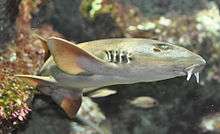
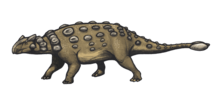

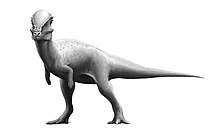
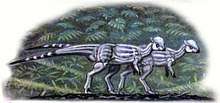
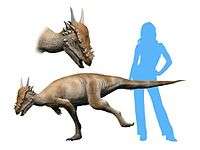
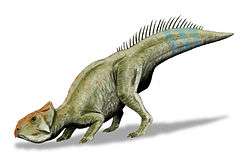
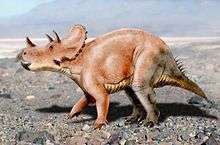
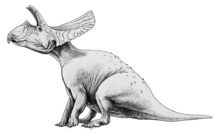
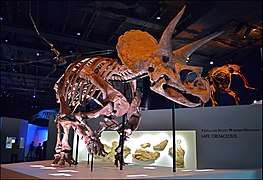
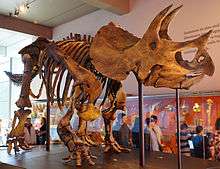
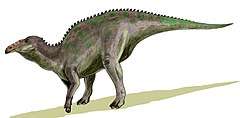


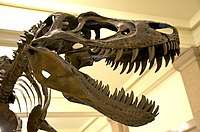

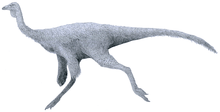


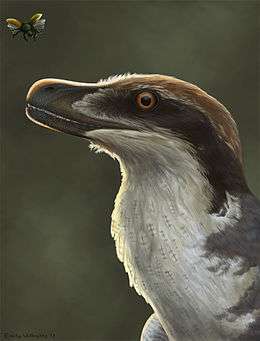

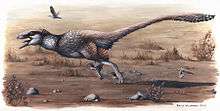
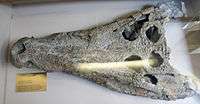
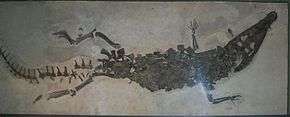

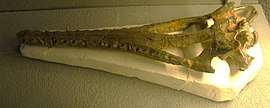
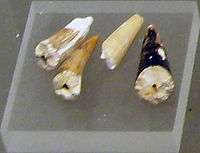

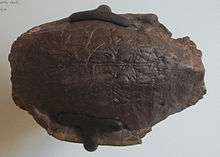

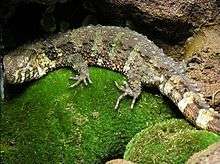
.jpg)

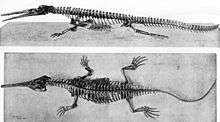
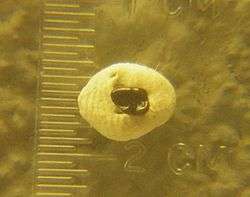

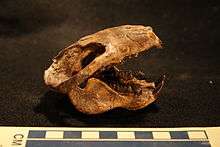

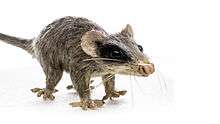



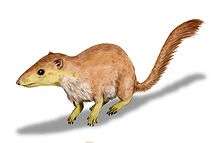

.jpg)

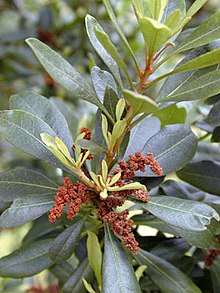
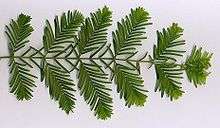

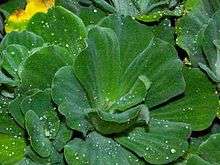
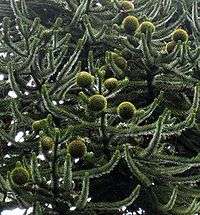

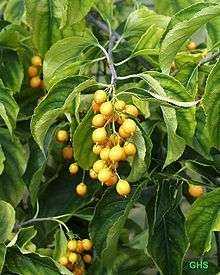

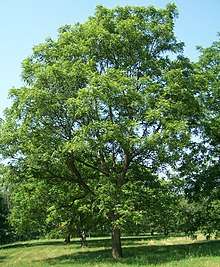
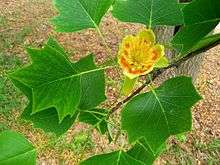
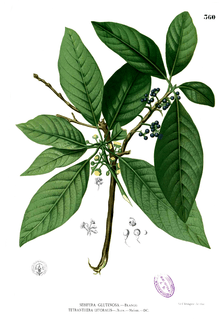

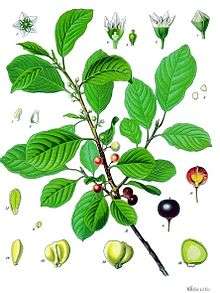
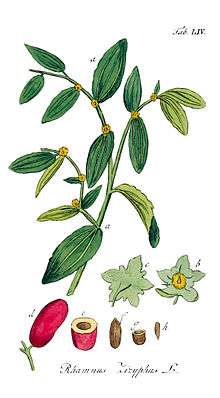



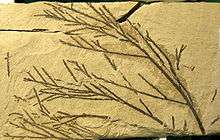

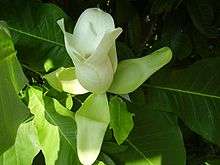
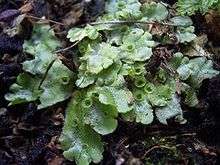
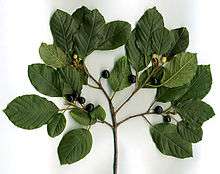

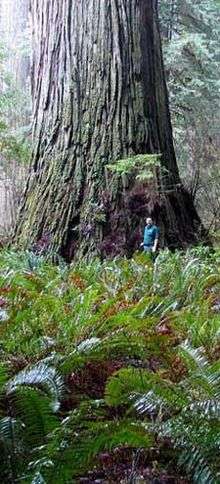
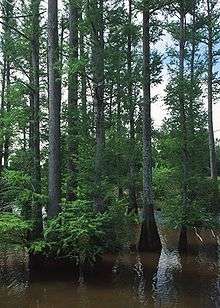
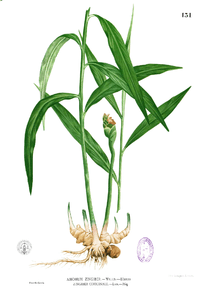
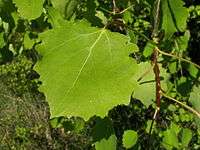
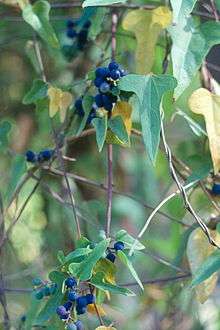
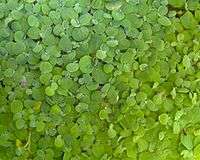
.jpg)